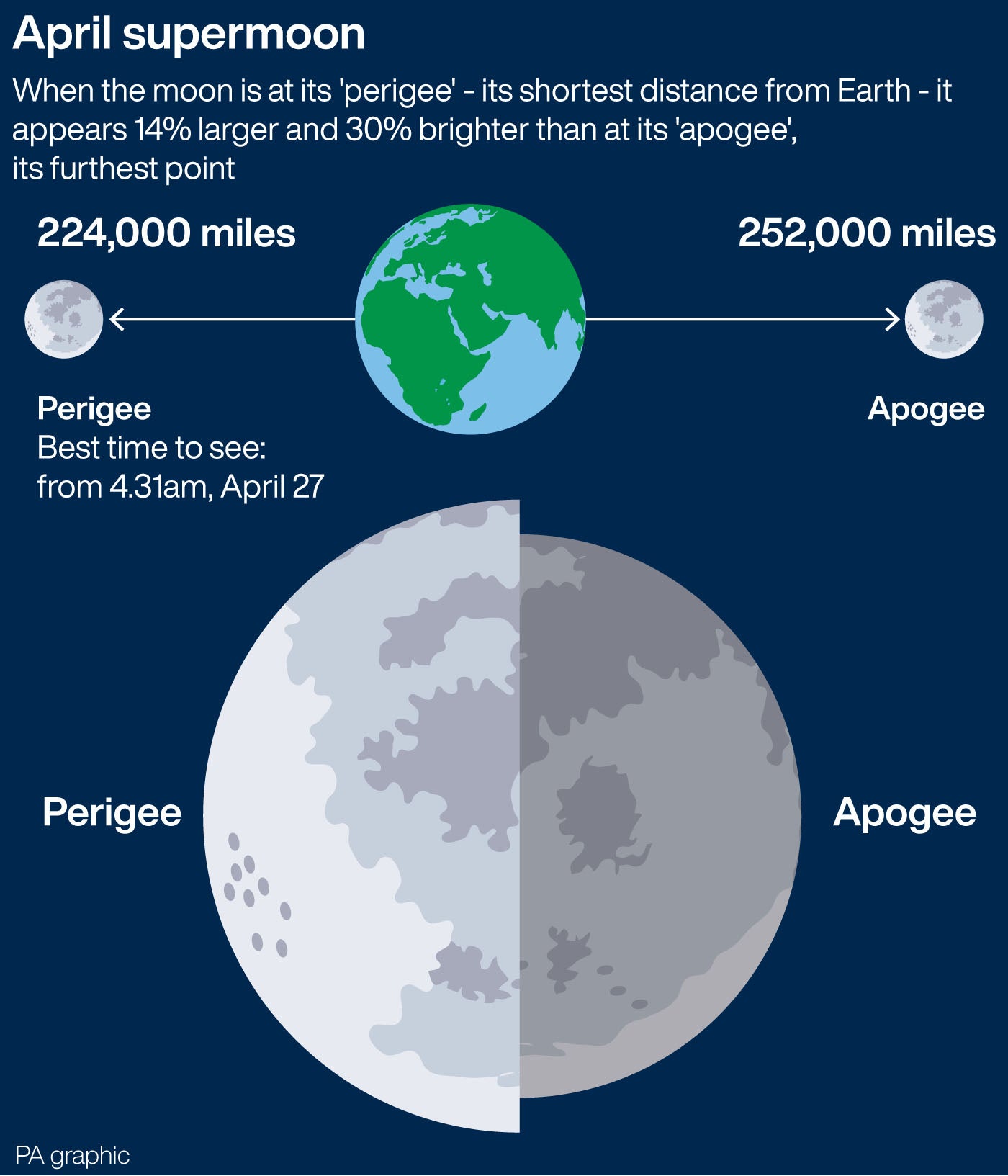Pink supermoon: What is April’s full moon and when will it appear?
Monday’s full moon is set to be the most impressive of 2021
Your support helps us to tell the story
From reproductive rights to climate change to Big Tech, The Independent is on the ground when the story is developing. Whether it's investigating the financials of Elon Musk's pro-Trump PAC or producing our latest documentary, 'The A Word', which shines a light on the American women fighting for reproductive rights, we know how important it is to parse out the facts from the messaging.
At such a critical moment in US history, we need reporters on the ground. Your donation allows us to keep sending journalists to speak to both sides of the story.
The Independent is trusted by Americans across the entire political spectrum. And unlike many other quality news outlets, we choose not to lock Americans out of our reporting and analysis with paywalls. We believe quality journalism should be available to everyone, paid for by those who can afford it.
Your support makes all the difference.The full moon that rises on Monday evening will seem bigger and brighter than usual, appearing as the first of only two supermoons in 2021.
The title of supermoon is granted to full and new moons that pass Earth at the closest point in their orbit, which in April and May will be less than 360,000km (224,000 miles).
“The term ‘supermoon’ was coined by astrologer Richard Nolle in 1979 and refers to either a new or full moon that occurs when the moon is within 90 per cent of perigee, its closest approach to Earth,” Nasa’s Gordon Johnston wrote in a recent blog post.
“These two full moons are virtually tied, with the full moon on 26 May, 2021, slightly closer to the Earth than the full moon [in April], but only by about 157km, or about 0.04 per cent of the distance from Earth to the moon at perigee.”

The supermoon will peak at 4.31am BST on 27 April, but will appear full in the sky to casual observers on each day either side.
The moon will rise in the east just before sunset and set in the west around sunrise.
It will be at this point, when the moon is closest to the horizon, that the moon will appear at its biggest brightest.
This is due to an optical effect known as the Moon Illusion, whereby the observer’s eye is tricked into comparing the moon to the relative size of other objects on the horizon, such as trees and buildings.
It is also at this point that the light reflected off the moon is most likely to be distorted by the atmosphere or air pollution, potentially contributing to a pinkish hue.
Weather forecasts from the Met Office predict that conditions across most parts of the UK will be ideal for viewing the pink supermoon.
Despite cloud and rain, over northern Scotland conditions in the rest of the country are forecast to be “fine and dry again”.
Conditions on Tuesday night will be less favourable, with the rain clouds over northern Scotland moving south.

Join our commenting forum
Join thought-provoking conversations, follow other Independent readers and see their replies
Comments